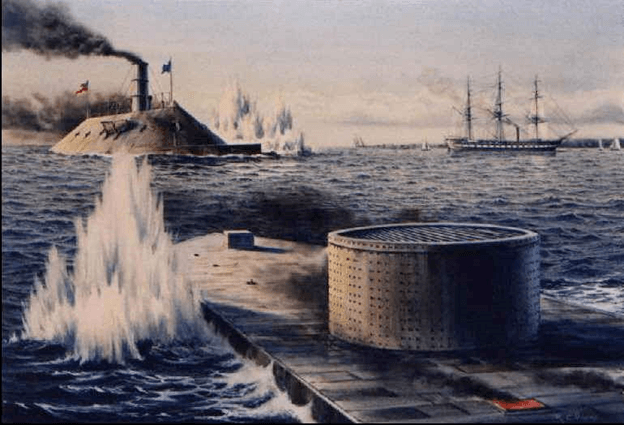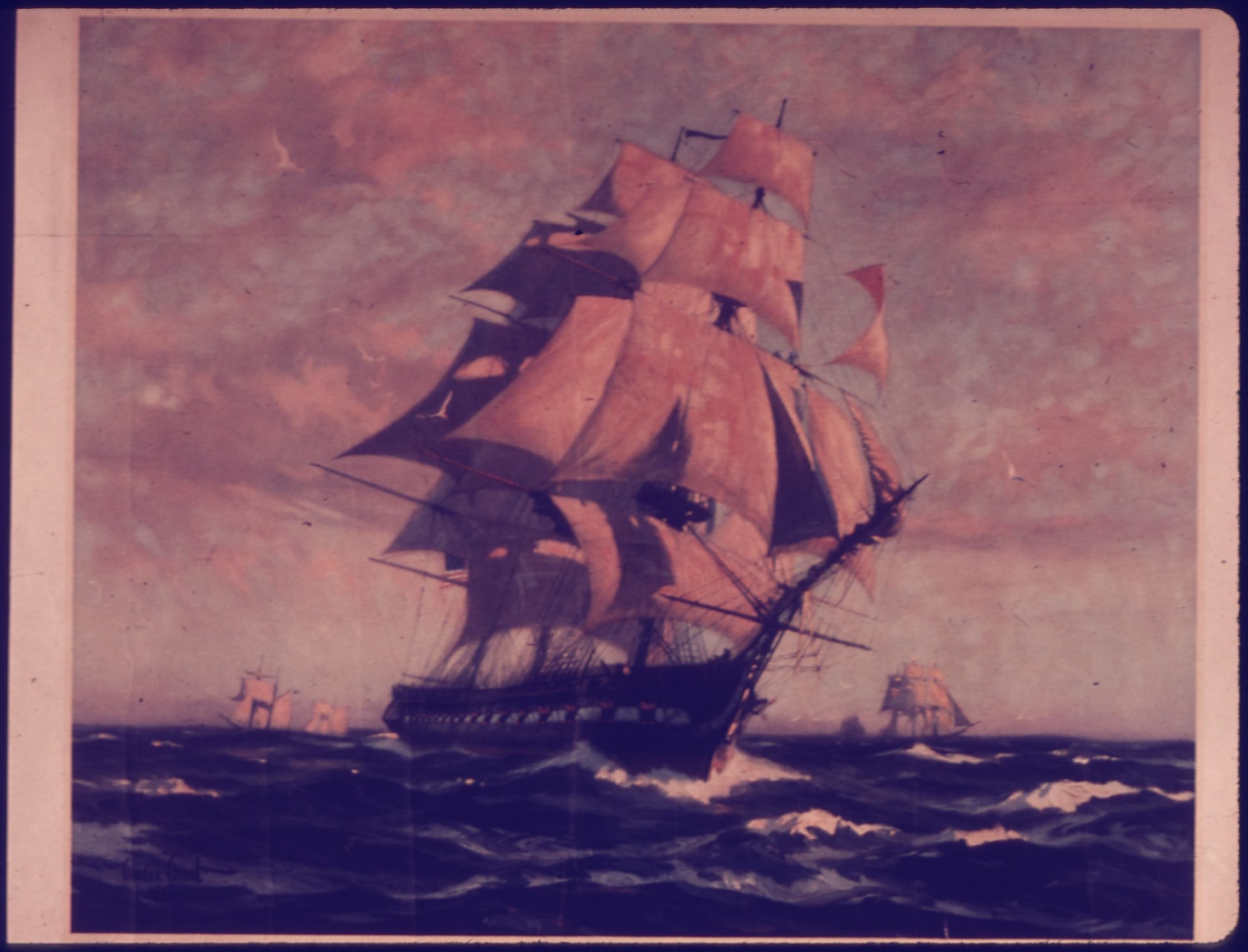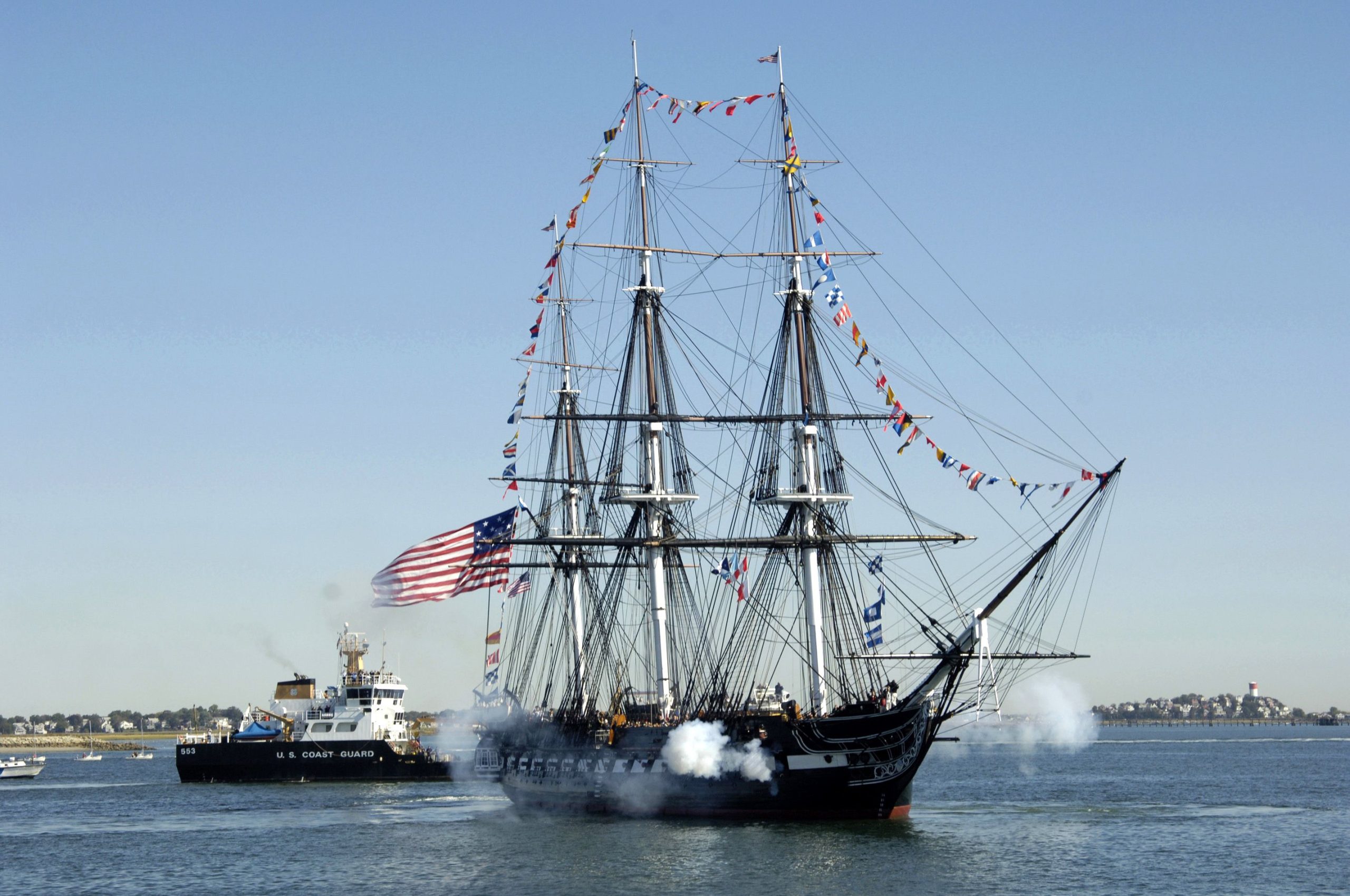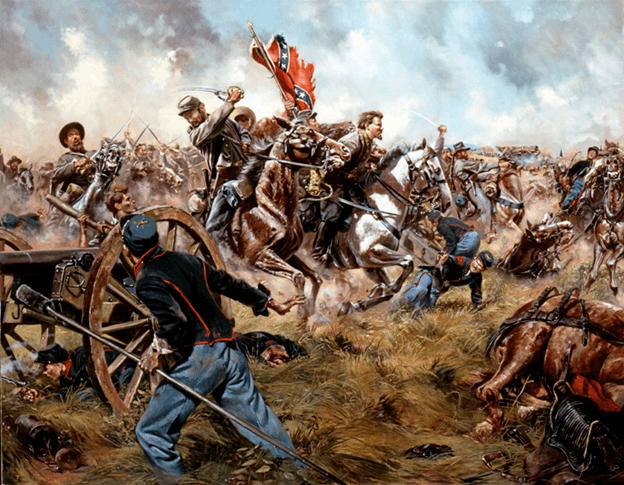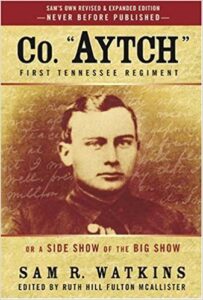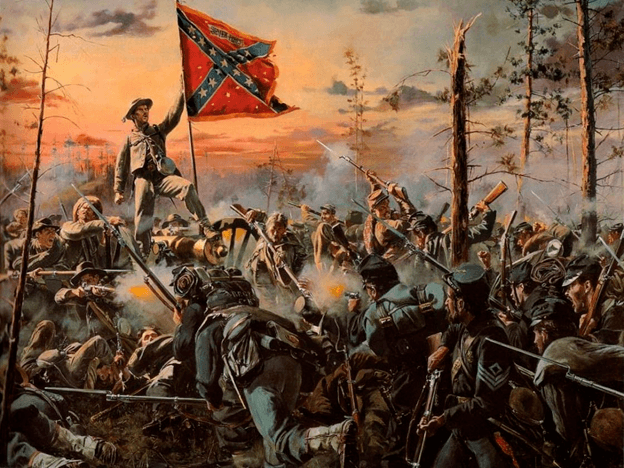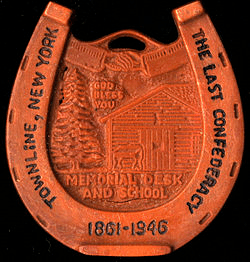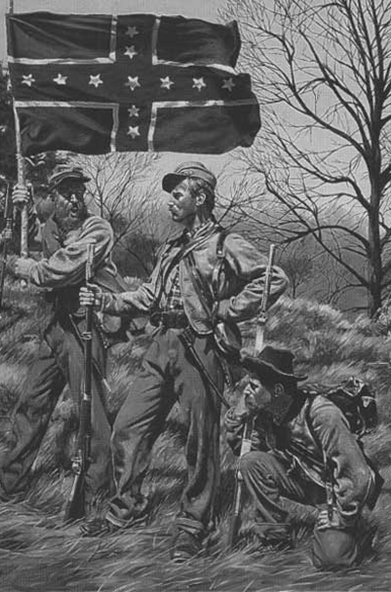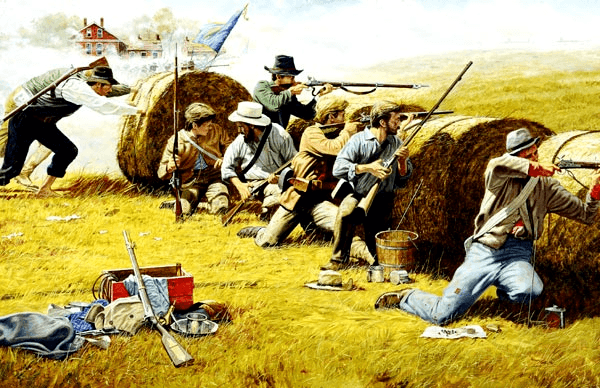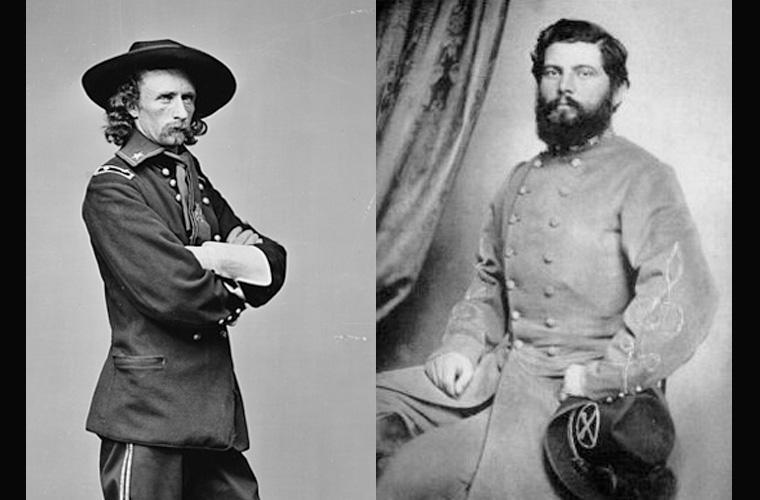
There were many Confederate officers who went on to serve in the U.S. Army after the Civil War. One such officer was Thomas Rosser, a very successful cavalry commander.Thomas Rosser and George Custer had been roommates at West Point. Custer called Rosser “Tex,” and Custer was “Fanny.” (Custer’s long, blond hair also earned him the nickname “Cinnamon” because he liked to perfume his hair with cinnamon oil.)Custer went on to fight for the Union, while Rosser served as a Confederate. They actually fought each other in several battles. Once, when Custer attacked Rosser’s camp, Rosser left a message: “You have disturbed me at my breakfast. You owe me one and I will get even with you.” Later, Rosser led his men into Custer’s camp while the Federals were brewing their coffee, scattering them all over.At the Battle of Trevilian Station, Rosser’s brigade defeated the Union boys and captured some of Custer’s personal supplies.Four months later, they met again. Before this clash, Custer rode out in front of his men, took off his hat, and bowed.At this fight, Rosser had to withdraw, and Custer captured Rosser’s personal wagon.Rosser sent Custer a message:“Dear Fanny,You may have made me take a few steps back today, but I will be even with you tomorrow.Please accept my good wishes and this little gift—a pair of your drawers captured at Trevillian Station.Tex” Custer then shipped Rosser’s gold-laced Confederate grey coat to his wife with a reply.“Dear friendThanks for setting me up in so many new things, but would you please direct your tailor to make the coat tails of your next uniform a trifle shorter.Best regards G.A.C.” Both survived the war. Custer later fought in the Wild West, and Rosser went back into uniform as a general to train cavalry for the Spanish-American War.
Thanks for reading. Please share our posts with your friends and family so they too can learn more about Southern Heritage and History.
Brought to you by: Ultimate Flags


